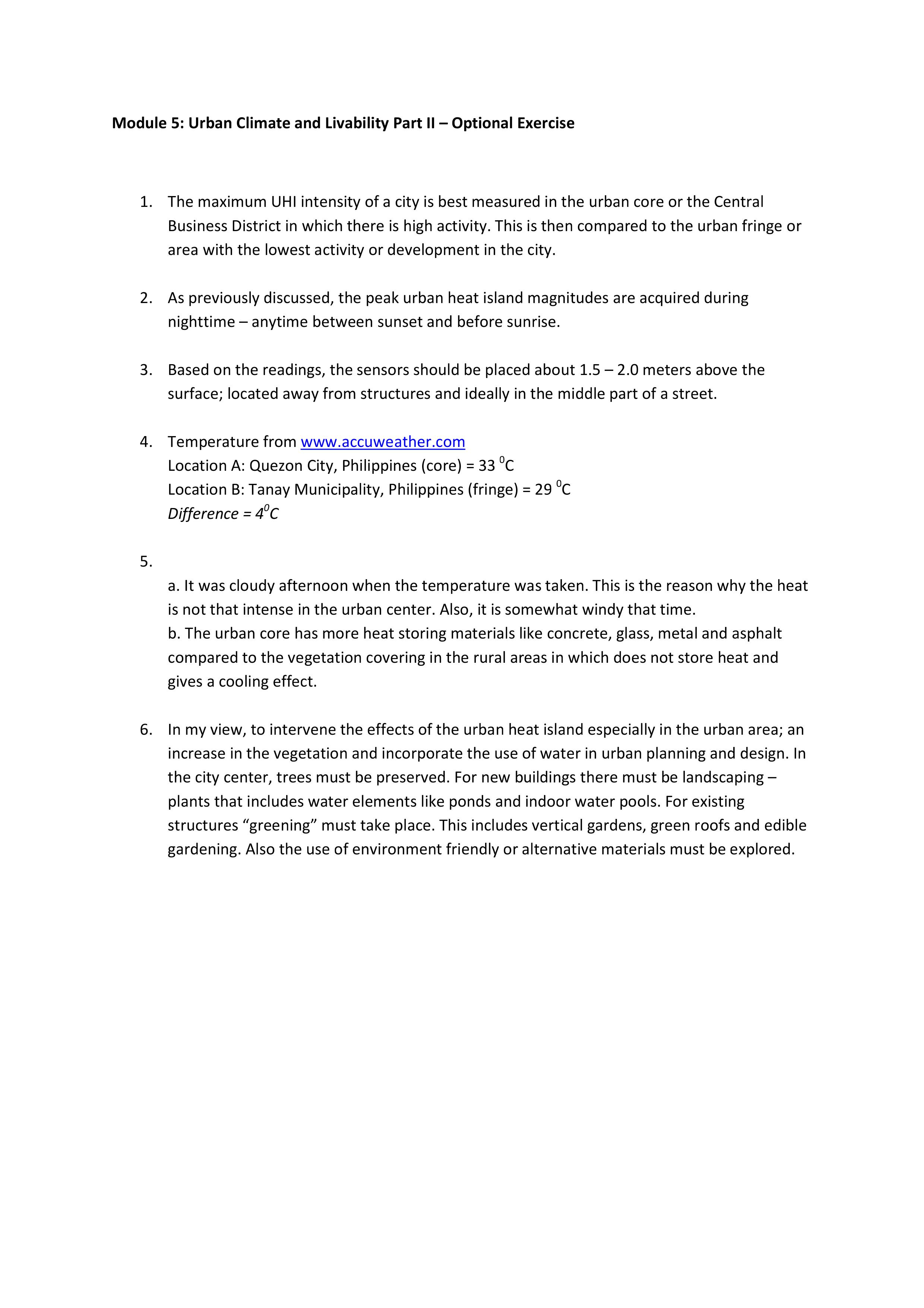
Uploaded on 2016-07-04 by Jason B. Santos
Module 5: Urban Climate and Livability Part II – Optional Exercise 1. The maximum UHI intensity of a city is best measured in the urban core or the Central Business District in which there is high activity. This is then compared to the urban fringe or area with the lowest activity or development in the city. 2. As previously discussed, the peak urban heat island magnitudes are acquired during nighttime – anytime between sunset and before sunrise. 3. Based on the readings, the sensors should be placed about 1.5 – 2.0 meters above the surface; located away from structures and ideally in the middle part of a street. 4. Temperature from www.accuweather.com Location A: Quezon City, Philippines (core) = 33 0C Location B: Tanay Municipality, Philippines (fringe) = 29 0C Difference = 40C 5. a. It was cloudy afternoon when the temperature was taken. This is the reason why the heat is not that intense in the urban center. Also, it is somewhat windy that time. b. The urban core has more heat storing materials like concrete, glass, metal and asphalt compared to the vegetation covering in the rural areas in which does not store heat and gives a cooling effect. 6. In my view, to intervene the effects of the urban heat island especially in the urban area; an increase in the vegetation and incorporate the use of water in urban planning and design. In the city center, trees must be preserved. For new buildings there must be landscaping – plants that includes water elements like ponds and indoor water pools. For existing structures “greening” must take place. This includes vertical gardens, green roofs and edible gardening. Also the use of environment friendly or alternative materials must be explored.